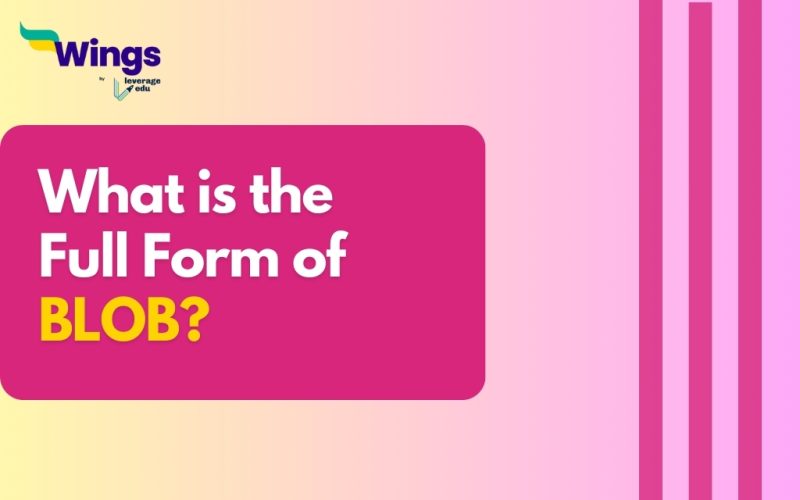The full form of BLOB is a Binary Large Object. Not to be confused with a blob of paint or glue. A BLOB denotes a data type generally used in database management systems for storing sizable binary data. Moreover, they are unlike traditional data types such as strings or integers. BLOBs are designed to handle large as well as complex binary data. It includes images, audio, videos, and other multimedia things.
Also Read: What is the Full Form of RDBMS?
History of BLOB
Table of Contents [show]
- BLOB was invented somewhere around the 1970s by Jim Starkey.
- Initially, BLOB was used to refer to big data chunks.
- A few years later, Terry McKiever, an Apollo Marketing person introduced the backronym Basic Large Object which later became Binary Large Object.
- According to this newly introduced definition, data was described as something that was not earlier described in traditional computer DB systems.
- However, such data type was too large to store during the 1970s and 1980s and thus, it became practical only after the disk space became cheap.
- Starkey, in 1997, explained that BLOB was used since it was unrecognizable for the general public at that time.
What is the Function of BLOB?
The primary function of BLOB is to give a storage mechanism within a database system that can accommodate large binary data.
- Additionally, BLOB allows people to store and retrieve files and other binary data directly from the database.
- BLOBs are particularly useful when dealing with multimedia content or any other type of data that cannot be represented using traditional data types.
Also Read: What is the Full Form of MYSQL?
What is the BLOB Type?
The 4 Types of BLOB are:
- TINYBLOB
- BLOB
- MEDIUMBLOB
- LONGBLOB
Also Read: What is the Full Form of JDBC?
Where is BLOB Used?
BLOBs are used in numerous applications and industries where there is a need to store and retrieve large binary data efficiently. Some common examples are:
- Content management systems
- Multimedia applications
- Document management systems
- E-commerce platforms
Any scenario that requires storing files, images, videos, or other binary data in a database may benefit from using BLOBs.
Also Read: What is the Full Form of ORM?
What is a BLOB Example?
An example of a BLOB could be storing profile pictures in a social media database. Each person’s profile picture is usually in an image format of JPEG or PNG and can be stored as a BLOB in the database. Furthermore, this allows the social media platform to easily manage and retrieve profile pictures alongside other user data, such as usernames and biographies.
Limitations of BLOB
- BLOB requires more response time.
- It uses a significant disk space.
- It is not universal as not all DBs support BLOBs.
Popular Full Forms
We hope this blog has helped you understand the BLOB Full Form and everything related to it. If you want to know more, find the general full form list on our blog. Moreover, in the world of short forms, you can rely on the Leverage edu page to know about more important full forms like this! Connect with us study abroad experts to achieve your international dream today!
 One app for all your study abroad needs
One app for all your study abroad needs















 45,000+ students trusted us with their dreams. Take the first step today!
45,000+ students trusted us with their dreams. Take the first step today!
